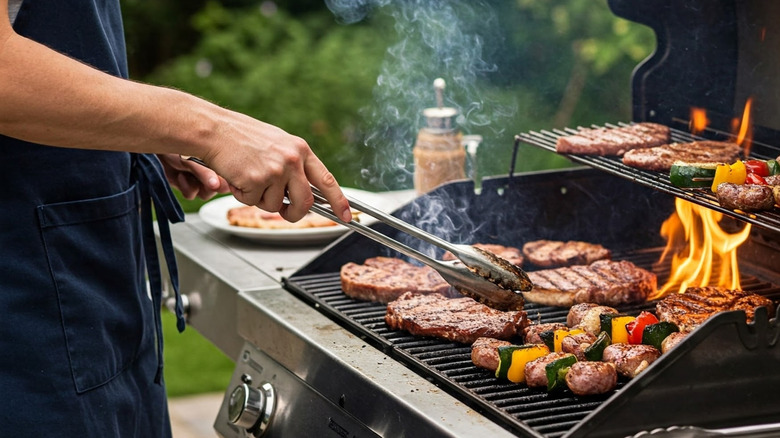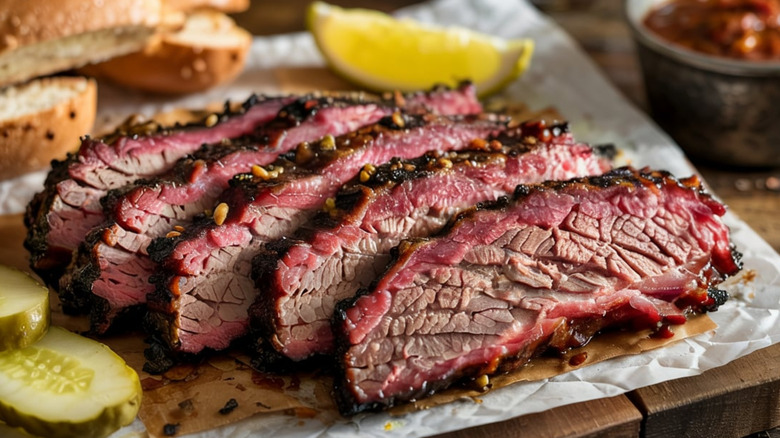Here's The One Meat You Should Never Grill
From juicy steaks and smoky yakitori chicken to sizzling Korean barbecue at home, the grill is a machine that cranks out fire, flavor, and guarantees top-tier eats. Despite its versatility, there are some meats you should never grill, no matter how tempting. One of these meats is brisket. To delve deeper into why the grill and brisket should never meet, Food Republic consulted Nicole Johnson, owner and recipe developer at Or Whatever You Do.
"Brisket is full of tough connective tissue," Johnson told us. This is because it's from the lower chest or breast of the cow, a heavily used muscle. "Grilling it hot and fast doesn't give those tissues time to break down, so you're left with a chewy, dry chunk of meat." Usually featured across multiple variations of American barbecue, this is why you'll usually see brisket being smoked or braised.
The brisket itself is composed of two very different parts: the point and flat. The flat is much leaner than the point, so they cook at uneven rates. On a grill's high heat, the flat will dry out before the point even has a chance to tenderize. As put by Johnson, "[Brisket] needs time to become tender, which is what people rave about when they refer to brisket." So, unfortunately, we recommend skipping fast cooking methods, like grilling, next time you're cooking brisket.
High heat versus low and slow: The effect on flavor and texture.
Brisket is a notoriously tough cut, both in texture and how challenging it is to cook properly, so the right cooking method can make all the difference. Grilling over high heat may seem like a quick and convenient option as opposed to the long, arduous process of low and slow cooking (which can take up to 16 hours), but the effect of high-heat, quick cooking on the flavor and texture of brisket is a far cry from its full potential.
According to recipe developer Nicole Johnson, "Grilled hot and fast, brisket gets tough, dry, and basically inedible unless it's sliced super thin across the grain and drowned in sauce (and even then, it's not ideal)." The outside may sear, and some fat will render, but the dense interior will stay rubbery. No amount of seasoning and no variation of barbecue sauce can mask the chewy, dry texture — it's simply the wrong method for this cut of meat.
In contrast, when brisket is cooked low and slow, it becomes something entirely different. These low-and-slow methods cook the brisket at a low temperature (around 225 to 275 degrees Fahrenheit), which allows the connective tissue to break down. As Johnson noted, "Smoked or braised low and slow, it transforms into something tender, juicy, and packed with flavor." The fat gently melts and bastes the meat with flavor, the collagen in the connective tissue turns into gelatin (which gives brisket its buttery look), and the meat becomes fork tender. Also, traditional methods, like smoking with the right type of wood, infuse the meat with rich, complex flavors that you simply can't get from other cooking methods.


